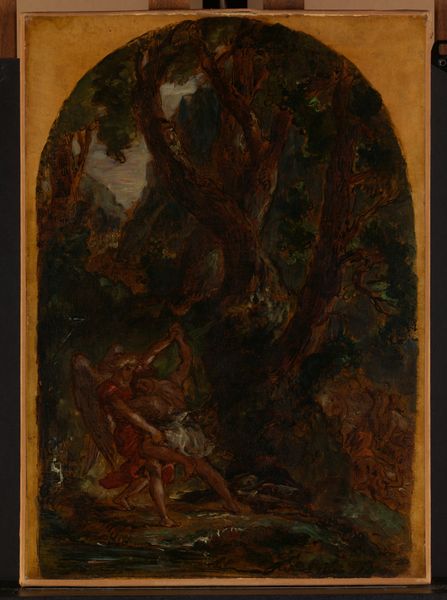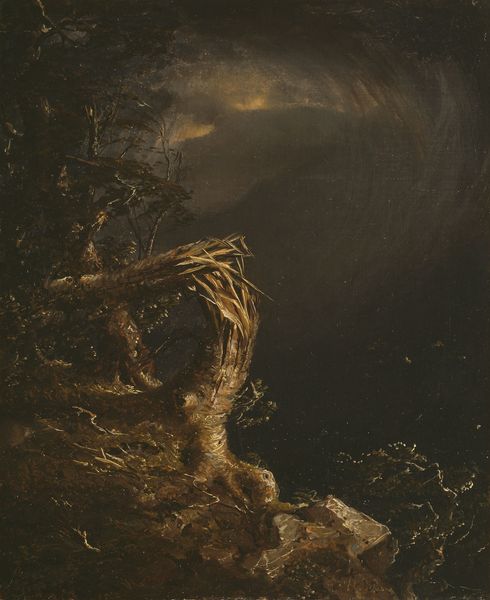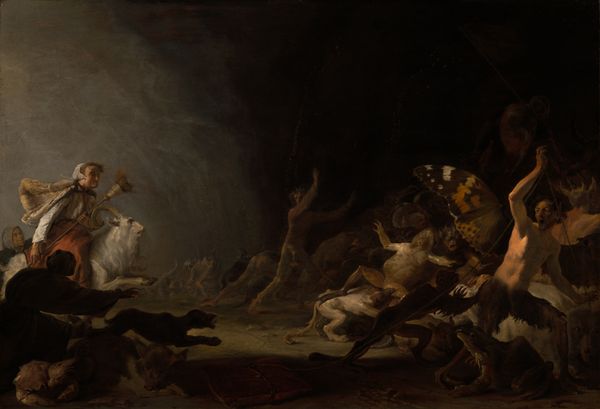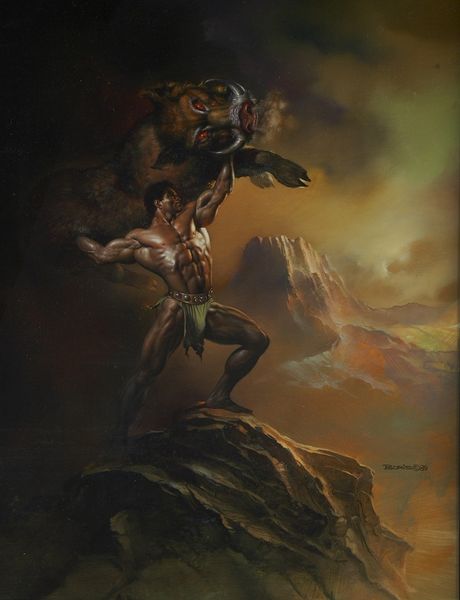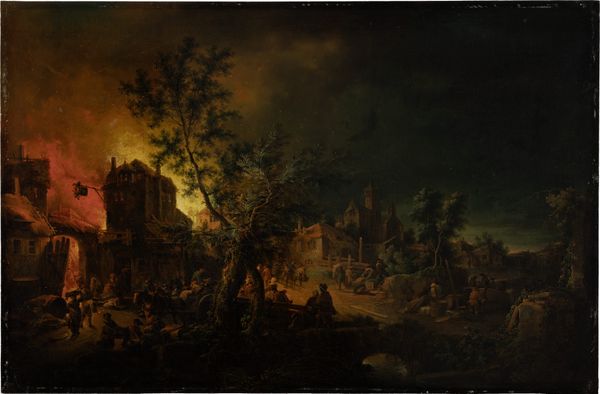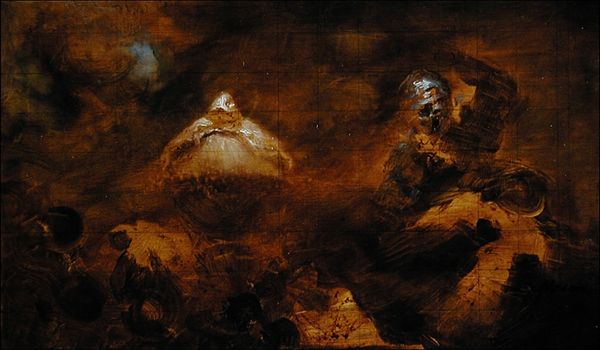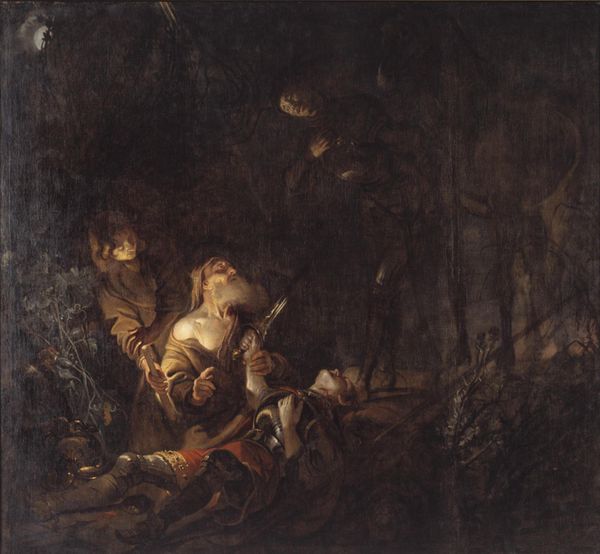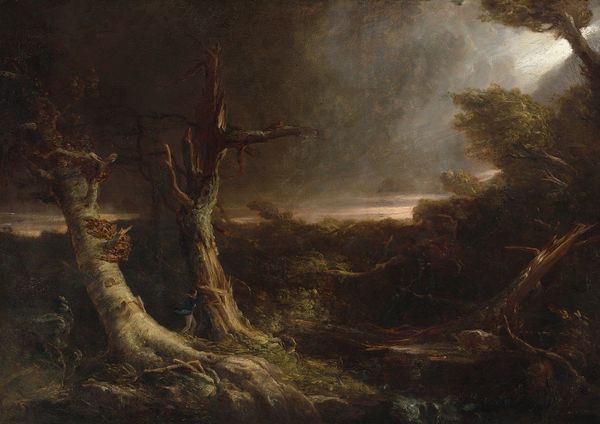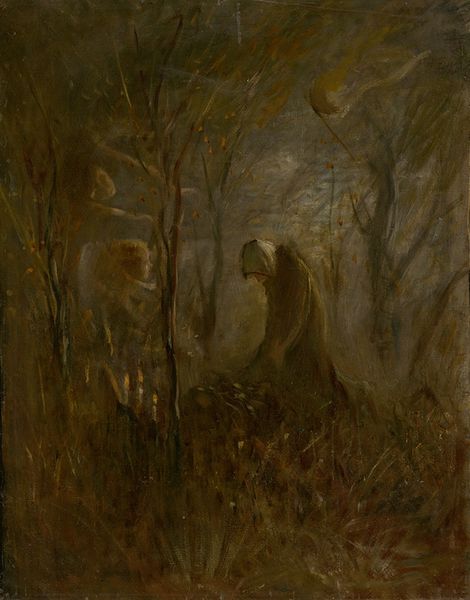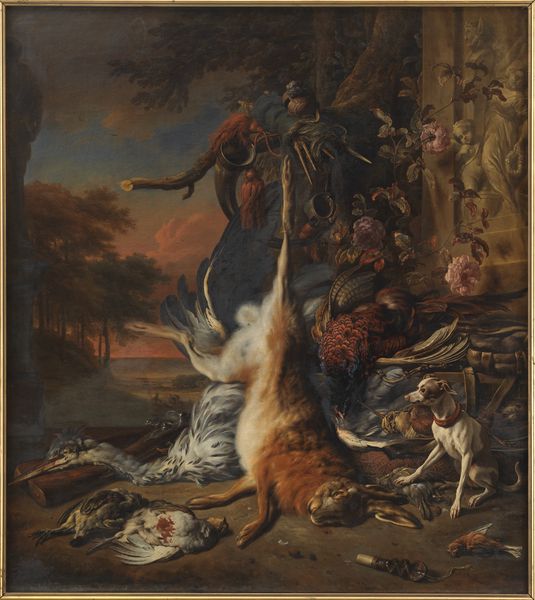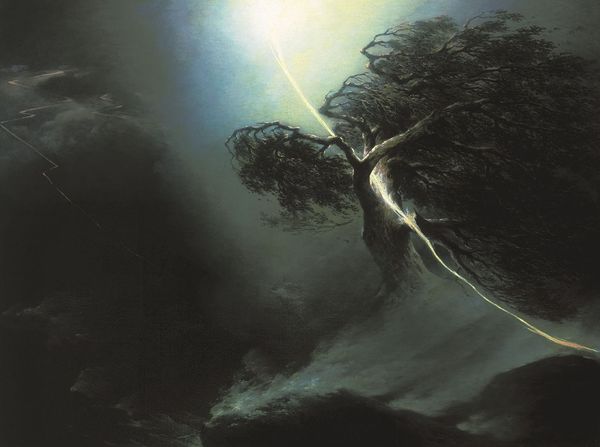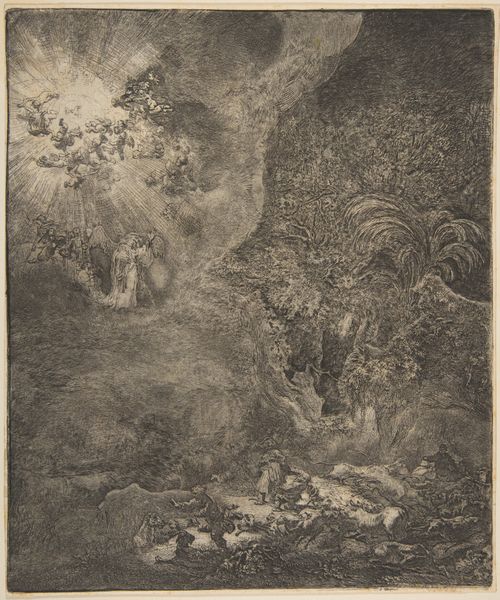
painting, watercolor
#
allegory
#
painting
#
landscape
#
winter
#
figuration
#
watercolor
#
female-nude
#
child
#
genre-painting
#
nude
#
male-nude
#
watercolor
#
rococo
Dimensions: Irregular, 39 1/4 x 41 5/8 in. (99.7 x 105.7 cm)
Copyright: Public Domain
Editor: This is "Allegory of Winter" by Jacques de La Joue the Younger, probably created sometime between 1706 and 1761. It's a watercolor piece, and what strikes me is how elegantly he captures this very bleak, almost melancholic, scene. What are your thoughts? Curator: It is elegant, isn't it? And notice how La Joue is not simply representing "winter" but staging it. We have a reclining female nude, presumably representing Winter, and a child nestled against her. How does this allegorical representation relate to the social functions of art at the time? Editor: You mean how art during that period was often about conveying particular ideas or messages? Curator: Exactly! Think about the role of patronage, for example. Works like this often served to demonstrate the patron's sophistication and classical knowledge. This also reflects the Rococo style, which aimed for grace and elegance but was also politically charged. Editor: So, it's not *just* a pretty picture of winter? It's making a statement? Curator: Absolutely. Look at the female figure. Where is she placed within the composition? What's the implication of posing a nude female as Winter during the dawn of Enlightenment? How would it be seen at the time? Editor: She’s kind of dominating the scene. It makes me wonder if the artist used her image as a commentary of the time or just trying to display idealised forms and please wealthy patrons. I'm not sure. Curator: Both could be true simultaneously, highlighting how deeply intertwined the aesthetic and political were during this period. It's a delicate dance of image and power, isn’t it? Editor: I hadn’t really thought of it like that, as such a complex layering of meaning. I see it in a new light now! Curator: Indeed. And it's this kind of questioning that allows us to appreciate how an artwork operates within the society and history that birthed it.
Comments
No comments
Be the first to comment and join the conversation on the ultimate creative platform.

